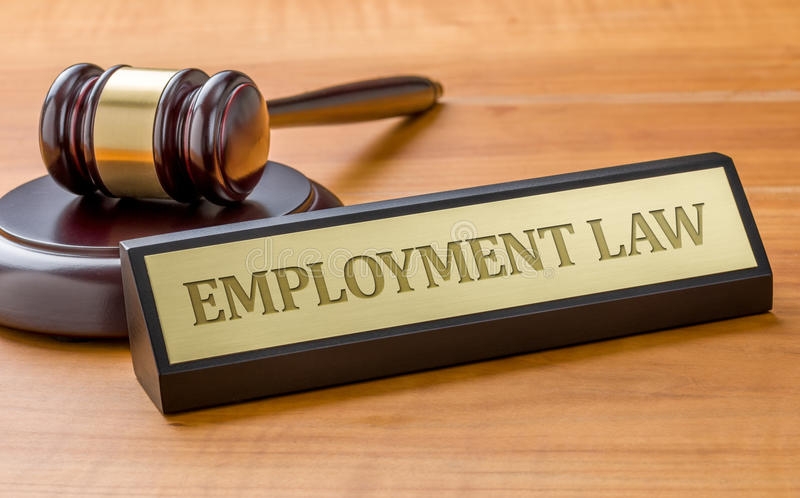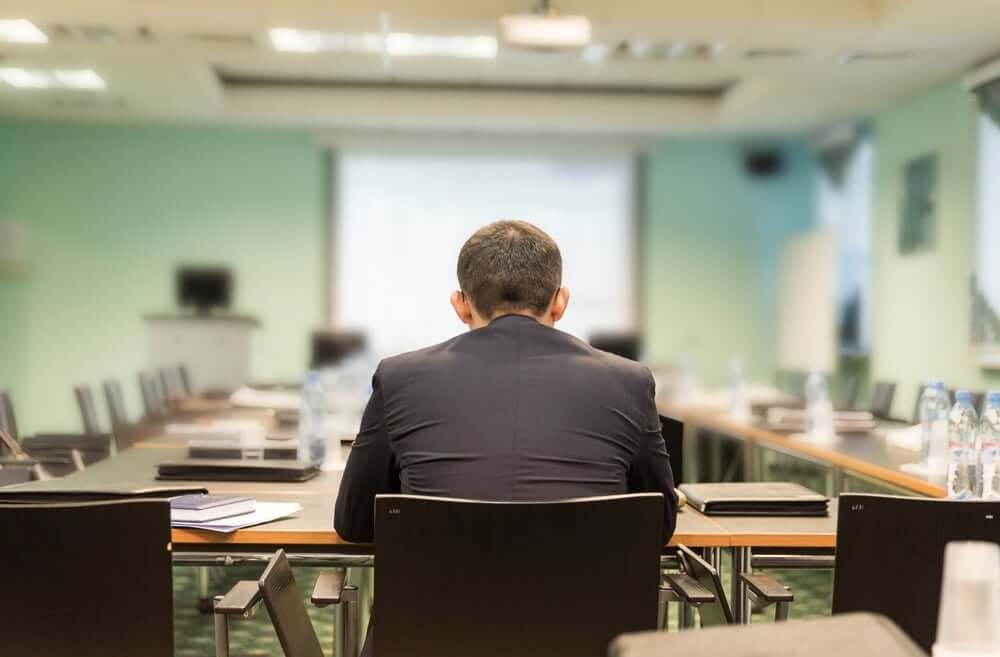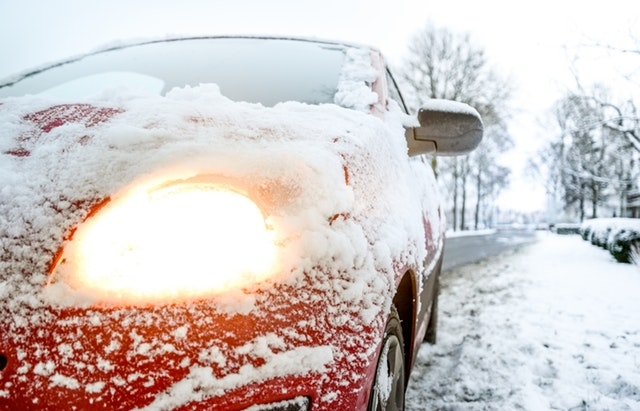o This includes nationally designated heritage assets such as nationally listed buildings (Grade I, II* or II), scheduled monuments, registered parks and gardens (Grade I, II* or II), cultural World Heritage Sites and registered battlefields. o It also covers all archaeological sites, as most archaeological fieldwork is carried out on non-designated archaeological sites. This also includes businesses and organisations which work in/on historic buildings or on sites with heritage significance (including work on historic marine sites such as licensees of Protected Wrecks), such as construction, fieldwork or conservation activity.
• Sites or places open to the public that occupy a historic structure, site or landscape, such as a place of worship which happens to be a historic building. • Performing arts venues, such as theatres, concert halls, and dedicated music venues (which host music and other programming artists that perform in front of audiences). Events • Indoor and outdoor events of any size, organised by businesses, charitable organisations, or public bodies. This includes business events (such as conferences, exhibitions, conventions, consumer/trade shows and other events and meetings), grassroots sport events, performing arts events (including theatre, music and other live performance events and festivals), and other events (including shows, fashion events and fairs). • Elite sport competitions, where they are run as an event with spectators. If you are organising an elite sport event, you should ensure it operates in line with the guidance for elite sports which covers all other aspects of elite sport operations. You should also follow the relevant measures for events in this guidance, where you are organising an event with spectators, as well as maintaining your business-as-usual engagement with Safety Advisory Groups and other relevant partners. • Local authorities and other local partners, who work with event organisers to ensure that events can take place safely.Priority Actions
1. Complete a health & safety risk assessment that includes risks from COVID19
As an employer by law you must protect employees and others (including contractors, volunteers and customers) from risks to their health and safety. You should: a) Complete a suitable and sufficient assessment of the risks of COVID-19 in the workplace. b) Identify control measures to manage that risk. You do not have to write anything down as part of your risk assessment if you:a. Have fewer than 5 workers. b. Are self-employed.
To carry out a suitable and sufficient risk assessment, you should consider the different ways the virus can spread and put in place measures to reduce the risk of each of these different ways. Your risk assessment should also include: a) An up-to-date plan for what you will do in the event of an outbreak in your workplace. This includes nominating a member of staff as the single point of contact who will contact local public health teams. b) Ensuring that workers, customers and visitors who feel unwell do not come to the workplace. By law, businesses must not require a self-isolating worker to work anywhere other than where they are self-isolating (normally their home). c) Risks arising from periods of closure. If your building is unoccupied or has reduced occupancy during a period of restrictions, you should take steps to manage any risks that could arise when reopening. d) The impact of your policies on groups who have protected characteristics, and to those who are more at risk of being infected with COVID-19 or have a higher risk of serious illness. e) Managing risk in any unusual workplaces. This could include specialist construction or archaeological sites, where it can be necessary for people to work in close contact in enclosed spaces (such as excavation trenches and roof spaces). You should consider ways to modify the work area or working practices to mitigate risk. f) Event organisers should also consider the risk factors identified by the Events Research Programme when undertaking risk assessments for their particular event or premises. Failure to carry out a suitable and sufficient risk assessment and put in place sufficient control measures to manage the risk may be considered a breach of health and safety law. Consult your Employees As an employer, you have a legal duty to consult employees on health and safety matters. You can do this by listening and talking to them about the work they do and how you will manage the risks from COVID-19. You can do this by consulting with any recognised trade union health and safety representatives. If you do not have any, you can consult with a representative chosen by the employees. As an employer, you cannot decide who the representative will be.2. Turn People with COVID-19 symptoms away
To reduce the risk of the virus spreading through droplets, consider: Putting in place measures to reduce contact between people, particularly between customers and workers. Where practical, measures could include: a) Keeping the activity time involved as short as possible. b) Reducing the number of people each person has contact with by using ‘fixed teams or partnering’ or ‘cohorting’ (so each person works with only a few others): c) Using screens or barriers to separate people from each other, or using back-to-back or side-to-side working, instead of face-to-face.o Screens are only likely to be beneficial if placed between people who will come into close proximity with each other. o Encouraging the use of face coverings by workers or customers in enclosed and crowded spaces.
To reduce the risk of the virus spreading through contaminated surfaces, consider: a) Advising customers and workers to wash their hands or use hand sanitiser frequently. b) Maintaining regular cleaning of surfaces, particularly surfaces that people touch regularly. c) You should also make sure that workers and customers who feel unwell stay at home and do not attend the venue. d) By law, businesses must not allow a self-isolating worker to come to work. e) If your building has been unoccupied for a period during any lockdowns, you should read the HSE guidance on Legionella risks. f) You should share your risk assessment results with your workforce. g) If possible, consider publishing the results on your website. The government expect all employers with over 50 workers to do so.3. Provide adequate ventilation
To reduce the risk of the virus spreading through aerosols, consider: Providing adequate ventilation: a) Through doors, windows and vents by mechanical ventilation using fans and ducts through a combination of both: b) Identifying any poorly ventilated spaces and taking steps to improve fresh air flow in these areas. A CO2 monitor could help you assess whether a space is poorly ventilated. If you cannot improve ventilation in poorly ventilated spaces, consider restricting the number of people in these spaces or stop using them if possible. c) Encouraging use of outside space where practical. Identifying any areas of congestion in your venue and considering if any reasonable steps could be taken to avoid this. How the measurements can help you take action: CO2 measurements should be used as a broad guide to ventilation within a space rather than treating them as safe thresholds. Outdoor levels are around 400 parts per million (ppm) and indoors a consistent CO2 value less than 800ppm is likely to indicate that a space is well ventilated. A CO2 concentration of above 1500ppm in a space is an indicator of poor ventilation. You should take action to improve ventilation where CO2 readings are consistently higher than 1500ppm. Where there is continuous talking or singing, or high levels of physical activity (such as dancing, playing sport or exercising), providing ventilation sufficient to keep CO2 levels below 800ppm is recommended. Additional guidance for event organisers: You should consider taking additional steps to manage risk if the event site or venue includes one or more of the factors below: • Indoor events:o Indoor events present a significantly higher risk of transmission than similar events taking place in outdoor spaces. o Poor ventilation in indoor spaces increases the risk of transmission further. Ventilation is the process of introducing fresh or cleaned air into indoor spaces. The more fresh or cleaned air that is brought inside, the more diluted any airborne virus will become. In poorly ventilated spaces the amount of virus in the air can build up, and residual virus can remain in the air after an infected person has left, increasing the risk of spreading COVID-19.
• Outdoor events:o (including those with indoor areas): Although outdoor events typically present fewer risks than indoor events, there may still be some indoor spaces within outdoor venues where risks are likely to be higher. o This could include areas where people congregate at higher densities (such as concession stands, bars, turnstiles and toilets), in which ventilation may be poorer. These risks can be reduced through implementing such things as queuing systems and appropriate signage to avoid congestion.
• Indoor settings such as private boxes and restaurants may still be occupied by some attendees for several hours during an event classified as ‘outdoors’. Ensuring that these spaces are sufficiently well-ventilated following the hospitality guidance. • Congested areas:o Some areas are more prone to potential congestion and crowding, including concession stands, bars, toilets, turnstiles, lifts, corridors, walkways, entry/exit points and ticket collection points. o Congested areas or ‘pinch points’ will be present at all types of events (including outdoor events) and could potentially lead to an increased risk of transmission. o Event organisers may want to consider additional risk management in these areas such as limiting the number of individuals who congregate for a longer duration, staggered entry and exit, or greater levels of ventilation in these zones.
• Events with free movement between people:o Events where there is significant close-mixing of people typically pose a higher risk, especially at those events where people will naturally tend to come together and mix for prolonged periods of time (for example, in front of a stage at a live performance or on a dancefloor).
• Crowd density:o As crowds at an event become denser (particularly in relation to venue size and capacity), it becomes more difficult for people to be physically distant from each other, and close contact inevitably increases. The Events Research Programme found that increasing crowd density can have an impact on localised ventilation which may in turn result in an increased risk of transmission. Key areas of higher density were observed in queues, in hospitality areas, and when attendees were leaving the venue at the end of the event.
• Large numbers of attendees:o Events where large numbers of people attend do not necessarily constitute a greater risk than smaller events, (particularly if the event is outside or attendees are dispersed over a large area). However, end-to-end transmission risks are increased through large numbers of people travelling to and from venues and visiting nearby premises such as pubs, bars and restaurants. Early engagement between event organisers and local transport authorities to manage crowds near transport hubs and routes to and from the venue should be factored into the event planning process.
• Events involving energetic activity:o Observations from the Events Research Programme indicate that unstructured and energetic activity with a high crowd density may lead to higher airborne transmission risks. This could include activities such as actively chanting and celebrating while attending sporting events, singing along at gigs and concerts, or dancing/singing at a nightclub.
4. Clean more often
To keep the workplace clean and prevent the spread of COVID-19 from touching contaminated surfaces. You should consider: a) Frequent cleaning of surfaces, particularly those that people touch often, reduces the potential for COVID-19 to spread and is a critical part of working safely. b) Ensure you are maintaining clean workspaces through regular use of your usual cleaning products. c) Pay particular attention to those in high-traffic areas, such as door handles, lift buttons and handrails. d) Regularly clean shared equipment, such as microphones used by speakers at events, between users where this is practical. Large venues and events should also: a) Frequently clean audience or spectator areas, including seating and concourse areas. Pay particular attention to touch-points such as doors, door handles, seat arms, handrails and taps. Where possible, you should organise your attraction or event so that these areas are cleaned between use by different customers. For example, cleaning seating areas between theatre performances or elite sport competitions. b) Take steps to reduce crowding in toilet facilities where possible, for example by implementing one-way systems. c) Provide additional waste facilities, including closed bins, and ensure rubbish is collected frequently. Considerations for heritage locations: a) Ensure cleaning materials and schedules are appropriate for historic surfaces and materials. Some historic surfaces are vulnerable to damage through inappropriate cleaning, for example with strong chemicals (such as concentrated bleach). b) Consider the most effective ways of regularly cleaning sensitive historic surfaces in high-traffic areas (such as entrances / stairways and offices in listed buildings) or touchpoints (such as handrails and surfaces) without causing lasting damage to them. c) Consider alternative approaches where increased frequency or intensity of cleaning would be damaging to a surface or material. For example, placing temporary covers over sensitive surfaces before cleaning other areas, or leaving areas empty for appropriate periods between visits. Hygiene Good hygiene practices, such as frequent handwashing, play a crucial role in reducing the risk of COVID-19 transmission. a) Put in place hygiene measures to reduce the risk of transmission. This should include providing handwashing facilities and hand sanitiser, particularly in high-traffic or higher-risk areas, such as reception and entrance foyers, doorways, lifts and bathroom facilities. This could include placing hand sanitiser stations at the entrances of different buildings or areas within your event site. b) Ensure handwashing facilities or hand sanitiser stations are available near shared facilities, equipment and objects. For example, at the entrance and exit of theme park attractions and rides. c) Ensure that handwashing and hand sanitiser facilities are checked and refilled regularly, and that any equipment placed is accessible to (and does not impede) wheelchair users. d) Maintain good hygiene practices, such as encouraging employees and customers to use hand sanitiser and wash their hands regularly. You could use signs and posters to build awareness of good handwashing technique, the need to increase handwashing frequency, and good hygiene practices like avoiding touching your face and coughing or sneezing into your arm. e) Consider how to ensure safety messages reach those with hearing or vision impairments. Customer toilets To ensure that toilets are kept open and to ensure/promote good hygiene and cleanliness in toilet facilities. Public toilets, portable toilets and toilets inside premises should be kept open and carefully managed to reduce the risk of COVID-19 spreading. You should consider: a) Use of signs and posters to make people aware of how to wash their hands well. b) That they should wash their hands frequently. c) That they should not touch their faces. d) That they should cough or sneeze into a tissue which is binned safely, or into their arms if a tissue is not available. e) Making hand sanitiser available on entry to toilets where safe, practical and accessible. f) Ensure suitable handwashing facilities are available. This includes running water and liquid soap and suitable options for drying. Namely paper towels, continuous roller towels or hand dryers. Consider the needs of people with disabilities. g) Setting clear use and cleaning guidance for toilets, with increased frequency of cleaning in line with usage. You should use normal cleaning products and pay attention to frequently hand touched surfaces. Consider using disposable cloths or paper roll to clean all hard surfaces. h) Keeping the facilities well ventilated. For example by ensuring any mechanical ventilation works effectively and opening windows and vents where possible. i) Taking special care when cleaning portable toilets and larger toilet blocks. j) Putting up a visible cleaning schedule. Keep it up to date and visible. k) Providing more waste facilities and more frequent rubbish collection.5. Enable people to check in at your venue
You should consider: a) Encourage customers to use hand sanitiser or handwashing facilities as they enter the premises. Do this to reduce the risk of COVID-19 spreading from people touching products while browsing. b) Re-think how assistance is provided. For example, using fixed pairs of colleagues to lift heavy objects rather than a single colleague lifting with a customer. c) Keeping contacts around transactions to a minimum. Where possible, use contactless payments. For customer restaurants and cafes, you should refer to the guidance on keeping workers and customers safe during COVID-19 in restaurants, pubs, bars, nightclubs and takeaway services.6. Communicate and train
Take steps to ensure that customers who have symptoms or who are self-isolating do not attend your facility. a) Clearly communicate that customers should not come to your facility or event if they need to self-isolate, for example because they have been asked to self-isolate by NHS Test and Trace; are required to isolate after travel; or because they are displaying any COVID-19 symptoms (a high temperature, new and persistent cough, or a loss of/change in sense of taste or smell), even if these symptoms are mild. b) Customers should be informed that if they, or anyone they live with, have one or more of these symptoms they should not attend. Ensure customers know how to visit your venue or event safely. a) Consider how you can inform visitors of any changes to processes in advance of their visit, for example on your website, when booking by phone or email, and in your digital marketing. b) Ensure you make any entry requirements clear to customers before booking, and at the point of sale. c) Take steps to remind visitors of special measures if they are complex, varied or likely to be forgotten. For example, you could reinforce messages on signs through spoken communication from a greeter, or other staff such as ushers or curators. d) Think about how to communicate important information to all of your customers, for example those who do not speak English as a first language, and those with protected characteristics (such as people who are hard of hearing or visually impaired). e) Encourage customers to follow good hygiene practices, such as using hand sanitiser when they enter the building and washing their hands regularly. f) Consider how to ensure safety messages reach those with hearing or vision impairments. Pre-event communications can be a particularly effective measure for events. Reducing risk to customers a) Do not admit customers who have suspected or confirmed COVID-19. b) If a customer presents with symptoms, or you become aware of a case of suspected or confirmed COVID-19 on-site, they should not be admitted or should be asked to leave the facility or event, unless they need to be transported to hospital for treatment. You are no longer required to collect customer contact details or keep a record of your staff and visitors. However, you are advised to continue to display an NHS QR code for customers wishing to check in using the app, as this will help to reduce the spread of the virus and protect your customers, visitors and staff. a) You do not have to ask customers to check in or turn them away if they refuse. b) If you display an NHS QR code, you should also have a system to collect (and securely store) names and contact details, for those who ask to check in but who do not have access to a smartphone or who prefer not to use the app. c) Consider using the NHS COVID Pass to reduce the risk of transmission at your venue or event. The NHS COVID Pass allows people to demonstrate that they are at a lower risk of carrying COVID-19 and transmitting it to others, through vaccination, testing or natural immunity. It can help organisations to reduce the risk of transmission of COVID-19. The government will work with organisations that operate large, crowded settings where people are likely to be in close proximity to others outside their household to encourage the use of the NHS COVID Pass. To support businesses, organisations and individuals in these settings, the NHS COVID Pass will be available through the NHS App, the NHS website, or as a letter that can be requested by ringing NHS 119. Visitors will also be able to show text or email confirmation of test results. If you use the NHS COVID Pass, you should ensure that you comply with all relevant legal obligations and guidance, including on equalities. Consider how best to reduce risks to customers. a) Minimise unnecessary contact. You could do this by using online booking and pre-payment and encouraging contactless payments wherever possible. b) Ensure that any measures you put in place are suitable for your facility or event. For example, for business events and conferences, you could consider providing (or recommending the purchase of) name tags and a badge holder for business cards, to avoid the exchange of business cards. Managing customers, spectators and audiences There are no capacity caps on the number of people permitted to attend visitor attractions or events. However, you may wish to take steps to ensure customers can attend as safely as possible, for example by introducing one-way systems to minimise crowding. These are likely to be specific to your type of venue or event, so you should think about the most appropriate steps you could take to manage risk. You should: a) Consider how you can reduce risk to staff who work with large numbers of guests. For example, installing screens can be beneficial if placed between people who will come into close proximity with each other. You could consider installing screens at ticket offices or box offices and providing hand sanitiser for staff and customers. b) Consider using a CO2 monitor to assess whether there is sufficient ventilation in your venue. If you identify that ventilation is poor, you should take steps to improve fresh air flow. If you cannot increase the supply of fresh air, you should consider whether you can reduce the number of people in your venue. c) Identify areas of crowding and consider what steps can be taken to avoid congestion if they present a higher risk of COVID-19 transmission. For example, historic buildings such as places of worship or ruined structures often have constrained spaces such as small rooms, narrow staircases and limited entrance or exit points. Measures such as limiting the number of people entering the space or staggering entrance and exit times will help to avoid overcrowding. In stadiums, auditoriums and theatre-style settings a) Providing allocated seating where possible. You should ensure that your facility is accessible (in line with your responsibilities under the Equality Act 2010) and that seating arrangements take into account the needs of people with disabilities and wheelchair users, and support from carers. You should also consider how seating arrangements work with any other accessibility services you offer, such as access to captioning or audio description services. b) Where allocated seating is not possible, consider other ways to reduce these risks, such as additional stewarding. Crowd management and events You should take additional steps to manage risk if the event or attraction:- takes place indoors.
- takes place outdoors, but also has indoor spaces.
- includes congested areas.
- involves free movement between people.
- includes crowd density; or
- has a large number of attendees.
7. Outbreaks in the workplace
To provide guidance if there is a COVID-19 outbreak in your workplace. You will usually need to: a. Make sure your risk assessment includes an up-to-date plan in case there is a COVID-19 outbreak. This plan should nominate a single point of contact (SPOC) where possible. The SPOC should lead on contacting local Public Health teams. b. If you become aware of any positive cases of COVID-19 in your workplace, you should inform your Local Authority Public Health Team. c. You should immediately identify any close workplace contacts and ask them to self-isolate. You should not wait for NHS Test and Trace. This prompt action will help reduce the risk of a workplace outbreak.• If your local PHE health protection team declares an outbreak, you will be asked to: • Record details of symptomatic Employees. • Assist with identifying contacts. • Ensure all employment records are up to date.
You will be provided with information about the outbreak management process. This will help you to: • Implement control measures. • Assist with communications to employees. • Reinforce prevention messages.





